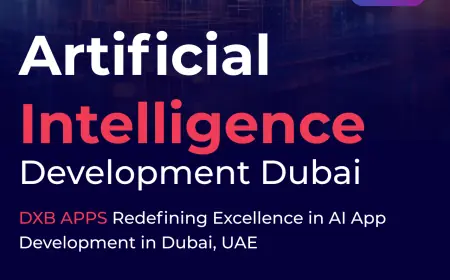Biosensors Market Size, Trends, and Growth Analysis 2025-2033
The global biosensors market size reached USD 30.9 Billion in 2024. Looking forward, IMARC Group expects the market to reach USD 57.0 Billion by 2033, exhibiting a growth rate (CAGR) of 6.97% during 2025-2033.

Market Overview:
The biosensors market is experiencing rapid growth, driven by rising demand for point-of-care diagnostics, advancements in nanotechnology and materials science, and growing adoption of wearable biosensors. According to IMARC Group's latest research publication, "Biosensors Market: Global Industry Trends, Share, Size, Growth, Opportunity and Forecast 2025-2033", The global biosensors industry size reached USD 30.9 Billion in 2024. Looking forward, IMARC Group expects the market to reach USD 57.0 Billion by 2033, exhibiting a growth rate (CAGR) of 6.97% during 2025-2033.
This detailed analysis primarily encompasses industry size, business trends, market share, key growth factors, and regional forecasts. The report offers a comprehensive overview and integrates research findings, market assessments, and data from different sources. It also includes pivotal market dynamics like drivers and challenges, while also highlighting growth opportunities, financial insights, technological improvements, emerging trends, and innovations. Besides this, the report provides regional market evaluation, along with a competitive landscape analysis.
Grab a sample PDF of this report: https://www.imarcgroup.com/biosensors-market/requestsample
Our report includes:
- Market Dynamics
- Market Trends And Market Outlook
- Competitive Analysis
- Industry Segmentation
- Strategic Recommendations
Growth Factors in the Biosensors Market
- Rising Demand for Point-of-Care Diagnostics:
The increasing need for rapid, accurate, and accessible diagnostic tools is a significant growth factor for the biosensors market. Point-of-care (POC) biosensors enable real-time health monitoring, reducing the reliance on centralized laboratories. For instance, glucose biosensors used in portable glucometers allow diabetic patients to manage their condition at home, improving quality of life. The rise in chronic diseases, such as diabetes and cardiovascular disorders, further fuels demand for POC devices. Additionally, the COVID-19 pandemic highlighted the importance of rapid diagnostics, with biosensors playing a key role in developing portable antigen tests. This trend toward decentralized healthcare continues to drive innovation and market expansion.
- Advancements in Nanotechnology and Materials Science:
Breakthroughs in nanotechnology and materials science are propelling the biosensors market forward by enhancing sensor sensitivity, selectivity, and durability. Nanomaterials like graphene and carbon nanotubes enable the development of highly sensitive biosensors capable of detecting biomarkers at low concentrations. For example, researchers have developed graphene-based biosensors for early cancer detection, identifying tumor markers with unprecedented accuracy. These advancements also reduce production costs, making biosensors more accessible for widespread use. The integration of biocompatible materials further supports the development of wearable and implantable biosensors, expanding applications in personalized medicine and continuous health monitoring, thus driving market growth.
- Growing Adoption of Wearable Biosensors:
The surge in popularity of wearable devices, such as smartwatches and fitness trackers, is a major driver for the biosensors market. These devices incorporate biosensors to monitor vital signs like heart rate, oxygen levels, and activity patterns, empowering users to take charge of their health. Companies like Fitbit and Apple have integrated advanced biosensors into their wearables, offering features like electrocardiogram (ECG) monitoring. This trend is particularly strong among health-conscious consumers and aging populations seeking proactive health management. The ability to collect and analyze real-time data also supports preventive healthcare, encouraging further investment in wearable biosensor technologies.
Key Trends in the Biosensors Market
- Integration with Artificial Intelligence and IoT:
The convergence of biosensors with artificial intelligence (AI) and the Internet of Things (IoT) is transforming the market by enabling smarter, data-driven healthcare solutions. AI algorithms analyze biosensor data to provide actionable insights, such as predicting disease progression or optimizing treatment plans. For instance, IoT-enabled biosensors in smart insulin pumps use AI to adjust insulin delivery based on real-time glucose levels. This integration enhances patient outcomes and supports remote monitoring, particularly for chronic disease management. The trend is also evident in smart home healthcare systems, where biosensors communicate with cloud platforms to deliver personalized health recommendations, driving market innovation.
- Expansion of Non-Medical Applications:
Biosensors are increasingly finding applications beyond healthcare, particularly in environmental monitoring, food safety, and agriculture. For example, biosensors are used to detect contaminants like pesticides in water or pathogens in food, ensuring safety and compliance with regulations. In agriculture, soil biosensors monitor nutrient levels, helping farmers optimize crop yields sustainably. A case study from the wine industry shows how biosensors detect spoilage microbes during fermentation, improving product quality. This diversification of applications broadens the market’s scope, attracting investment from various industries and fostering the development of specialized biosensors tailored to non-medical needs.
- Focus on Miniaturization and Portability:
The trend toward smaller, more portable biosensors is reshaping the market by making devices more user-friendly and versatile. Miniaturized biosensors are ideal for integration into compact devices like smartphones or wearable patches, enhancing accessibility. For instance, a recent innovation involves a smartphone-based biosensor that measures blood oxygen levels using a simple attachment, offering a cost-effective solution for respiratory monitoring. This focus on portability aligns with consumer demand for convenient health monitoring tools. Additionally, miniaturized biosensors are critical for implantable devices, such as continuous glucose monitors, which provide seamless health tracking, further accelerating market growth.
Leading Companies Operating in the Global Biosensors Industry:
- Abbott Laboratories
- AgaMatrix Inc. (WaveForm Technologies Inc)
- DuPont de Nemours Inc.
- F. Hoffmann-La Roche AG
- General Electric Company
- LifeScan Inc. (Platinum Equity LLC)
- Medtronic PLC
- Nova Biomedical Corporation
- PHC Holdings Corporation
- Siemens AG
- Thermo Fisher Scientific Inc.
Biosensors Market Report Segmentation:
Breakup By Product:
- Wearable Biosensors
- Non-Wearable Biosensors
Non-wearable biosensors exhibit a clear dominance in the market due to their widespread use in clinical diagnostics and laboratory settings, offering high precision and reliability for various medical and research applications.
Breakup By Technology:
- Electrochemical Biosensors
- Optical Biosensors
- Piezoelectric Biosensors
- Thermal Biosensors
- Nanomechanical Biosensors
- Others
Electrochemical biosensors represent the largest segment because they offer high sensitivity, cost-effectiveness, and versatility, making them ideal for detecting a wide range of analytes in medical and environmental monitoring.
Breakup By Application:
- Blood Glucose Testing
- Cholesterol Testing
- Blood Gas Analysis
- Pregnancy Testing
- Drug Discovery
- Infectious Disease Testing
- Others
Blood glucose testing holds the biggest market share as diabetes management requires continuous and real-time monitoring, driving the demand for glucose biosensors globally.
Breakup By End Use:
- Point of Care Testing
- Home Healthcare Diagnostics
- Research Laboratories
- Security and Biodefense
- Others
Point of care testing accounts for the majority of the market share, driven by the increasing need for rapid, accurate diagnostics in decentralized healthcare settings, allowing for immediate decision-making.
Breakup By Region:
- North America (United States, Canada)
- Asia Pacific (China, Japan, India, South Korea, Australia, Indonesia, Others)
- Europe (Germany, France, United Kingdom, Italy, Spain, Russia, Others)
- Latin America (Brazil, Mexico, Others)
- Middle East and Africa
North America dominates the market attributed to advanced healthcare infrastructure, high adoption of innovative technologies, and a growing focus on personalized medicine and chronic disease management.
Research Methodology:
The report employs a comprehensive research methodology, combining primary and secondary data sources to validate findings. It includes market assessments, surveys, expert opinions, and data triangulation techniques to ensure accuracy and reliability.
Note: If you require specific details, data, or insights that are not currently included in the scope of this report, we are happy to accommodate your request. As part of our customization service, we will gather and provide the additional information you need, tailored to your specific requirements. Please let us know your exact needs, and we will ensure the report is updated accordingly to meet your expectations.
About Us:
IMARC Group is a global management consulting firm that helps the world’s most ambitious changemakers to create a lasting impact. The company provide a comprehensive suite of market entry and expansion services. IMARC offerings include thorough market assessment, feasibility studies, company incorporation assistance, factory setup support, regulatory approvals and licensing navigation, branding, marketing and sales strategies, competitive landscape and benchmarking analyses, pricing and cost research, and procurement research.
Contact Us:
IMARC Group
134 N 4th St. Brooklyn, NY 11249, USA
Email: [email protected]
Tel No:(D) +91 120 433 0800
United States: +1-631-791-1145
What's Your Reaction?
 Like
0
Like
0
 Dislike
0
Dislike
0
 Love
0
Love
0
 Funny
0
Funny
0
 Angry
0
Angry
0
 Sad
0
Sad
0
 Wow
0
Wow
0











































